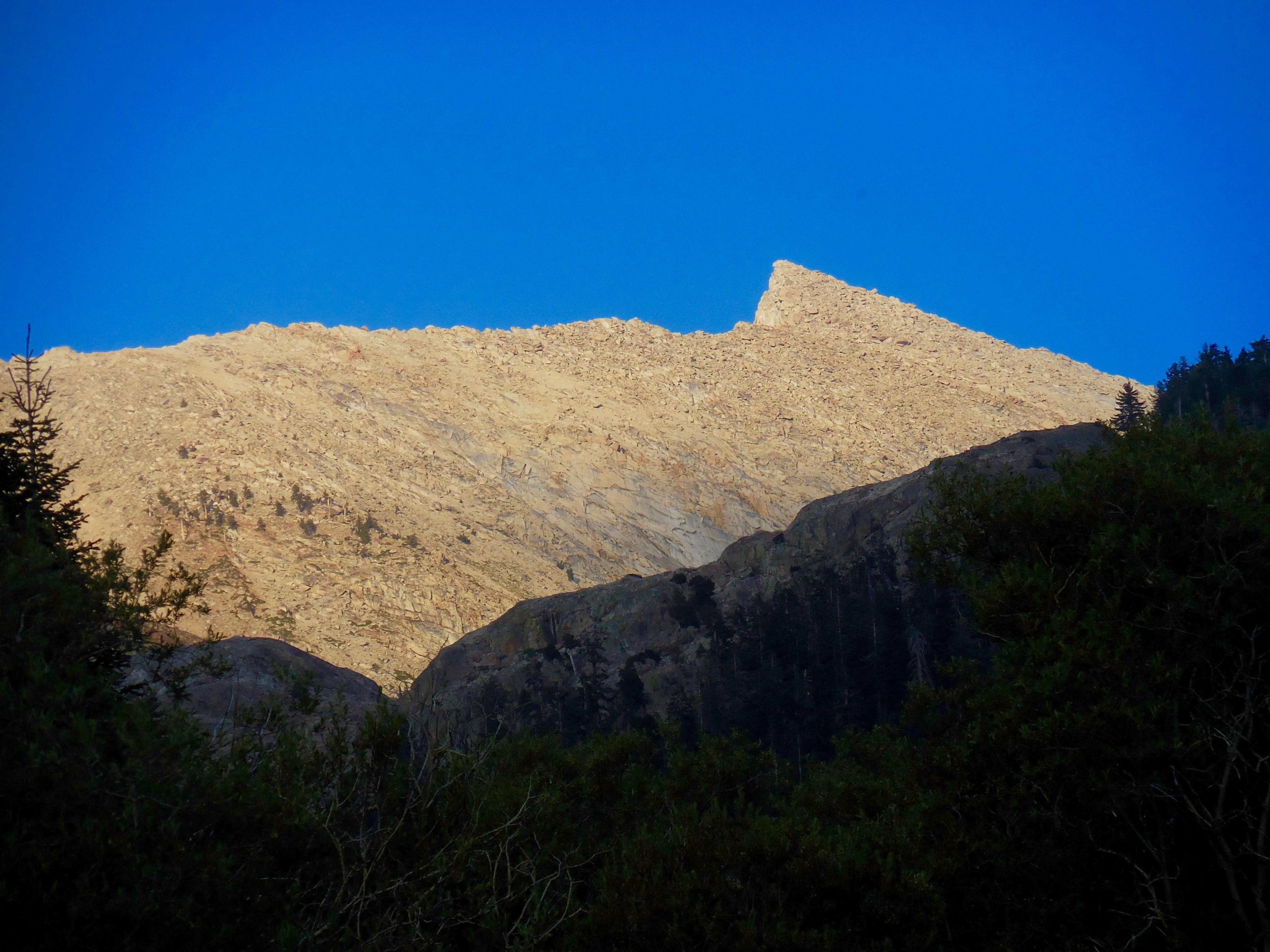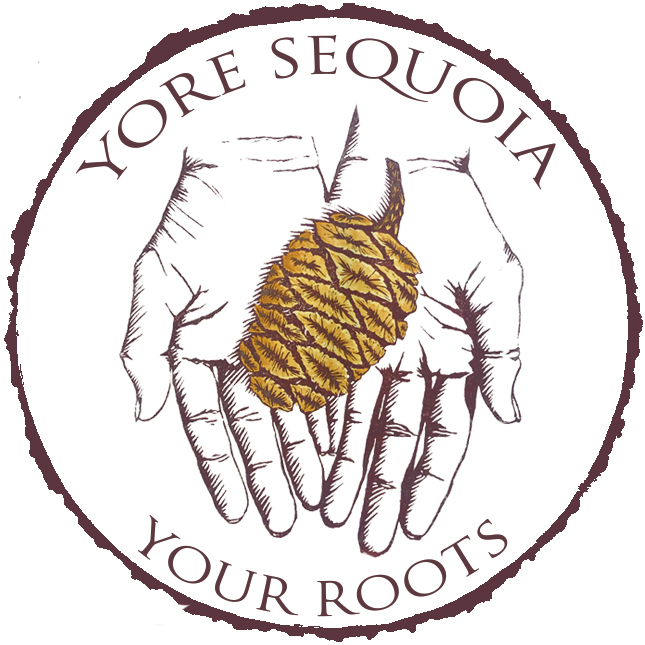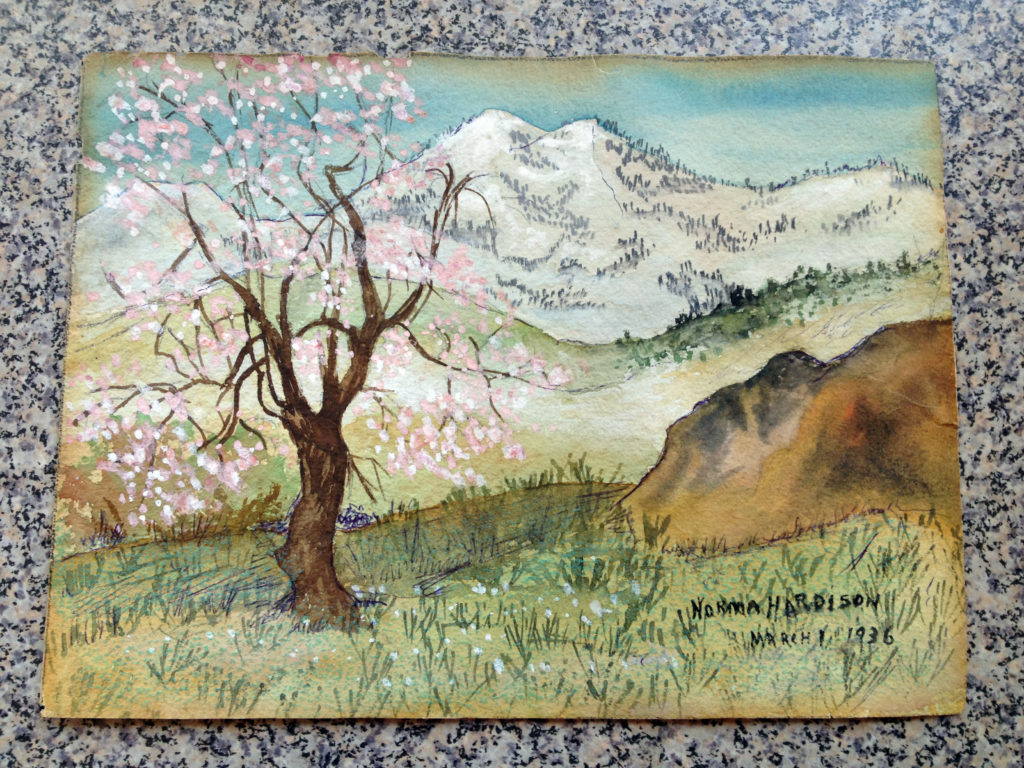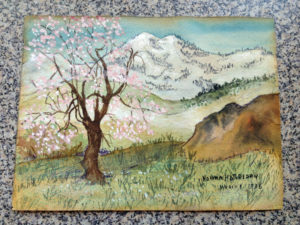
This article was written by Phil Winser of the Kaweah Colony about a trip to Mineral King in August 1891.
Sawtooth at 12,343 feet towers over Mineral King and affords eye-level views of Mount Whitney, 14,505 feet.
After supper, on the evening of August 15, Comrades Westervelt, Clark, Winser, Al Redstone, Albie Martin, Ralph Hopping, and Willie Purdy, started for Mineral King and had a lovely moonlight walk through the pines. We found the rest of the party, consisting of Mrs. Brann, Mrs. Sully, Mrs. Westervelt, Jim Bellah, Ray Brann, Walter Boggs, and Miss Abbie and Emma Purdy, who joined at Atwell’s, camped by the river, and stayed up by the fire until late listening to George Clark’s violin and Al Redstone’s comicalities.
The ladies then betook themselves to their sleeping place – the wagon – and the rest of us spread down with our feet to the fire as closely as sardines in a box, for the nights at Mineral King are rather chilly. An early breakfast with the usual difficulties of camp cookery, a saddling of the two mules for the ladies to ride, by turns, and the start was made by 7:30; two of the party, the only wise ones, we came to think afterward, electing to remain in camp.
A few dilapidated wooden houses, a lot of tents and other camping accessories, tamarack trees and a very temporary population of about 200 people seemed to be the principal feature of Mineral King “town;” but it is the surroundings, and not the town, which are so interesting to the visitor. The mountain trail leading to our destination was a very blind one – rough and narrow – and the mule riders must have had great confidence in the sure-footedness of their steeds. At first we passed through dwarf manzanita, chaparral, and other low brush.
Higher up are a scattering of tamarack, juniper and pinyon trees looking terribly weather beaten and gnarled. We kept up a sharply rising valley between two ridges, the “Saw Tooth,” rising high before us.
About ten o-clock we reached the first patch of snow and of course snowballing followed. It was strange to see and feel it with a bright sun overhead and green grass, brilliant flowers, butterflies and hummingbirds all around.
Lower Monarch Lake with Sawtooth directly above.
At the foot of the high ridge which is crowned by the distinctive shaped pile we meant to scale, are two lakes – Upper and Lower Monarch – blue as the sky and cold as snow water. Here the mules were hobbled and left to enjoy a bountiful feed of grass, for the trail was no more. Now climbing began in earnest.
Rotten granite slopes at first where one’s feet sank in and backward at every step and the grade steep enough to require the use of hands; this was most tiring and solid rocks were preferable. From a distance the mountain appears the most barren looking pile imaginable, but almost at every step we found flowers of many kinds, their bright colors contrasting beautifully with the grey and brown of their sterile background. I never saw anything like the number of varieties of flowers. Even the minute snow fungus indigenous to the Alps and Sierra Nevada were there tingeing the snow patches with a light pink.
There is no regular route to the top of our mountain for there are few places where the rocks cannot be climbed. It appears to more a pile of broken pieces than a succession of solid cliffs; the climbing, however, was very hard on the ladies, and when the top was reached they were very tired. The view and grand breeze, however, seemed to do them a world of good and indeed it was worth all the labor of getting there.
I cannot hope to give an adequate description of the sight. All around were mountains of every size and shape, we apparently being on the highest peak and looking down on all. Mount Whitney could be plainly seen looking as though sprinkled with snow. Jim Bellah thought he could recognize Mount Shasta also.
The San Joaquin Valley was rather obscured by the smoke hanging in the air from the numerous fires; but the source of the Kaweah could be traced, and, it is said, that with a looking glass, on a clear day, the yellow of the cornfields can be seen, also the Coast Range and Pacific Ocean beyond.
The trail to Sawtooth today traverses the opposite side of the Monarch canyon.
Right below us, for on one side the descent is sheer precipice, was another of those deep blue lakes some thousand feet down and looking as though a pebble could be tossed into it; pine forests on some of the heights and patches of snow in the hollows and crevices of all. We were about 13,300 ft. above the sea, but a humming bird seemed quite at home there and buzzed by like a large insect.
After drinking in a scene the like of which I had never beheld before, we were obliged to tear ourselves away. The descent was accomplished in far less time than it took to go up; but it was not done without considerable exertion, and I suppose there was no one of the party but was heartily glad when the lakes were reached again and the accumulation of fine granite could be emptied out of boots, and droughts of that crystal water be taken.
The rest of the return journey was accomplished safely, but camp was not reached until after dark and we were very glad the two had stayed behind for supper was ready and we were ready for it


